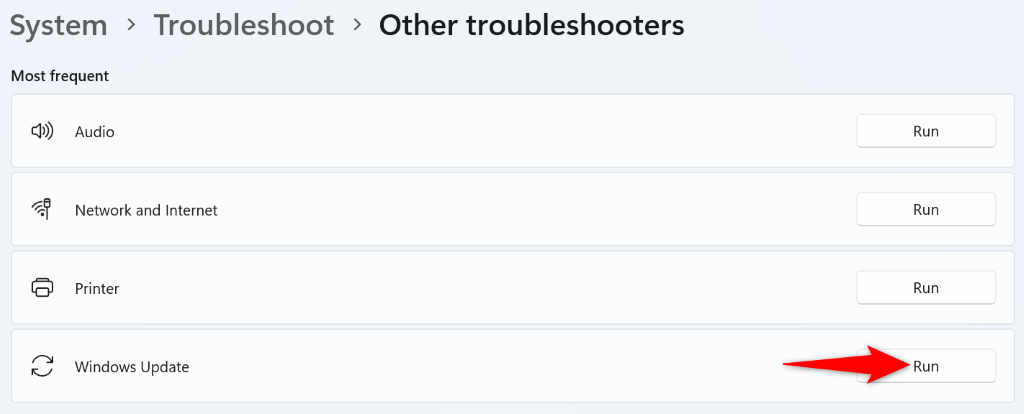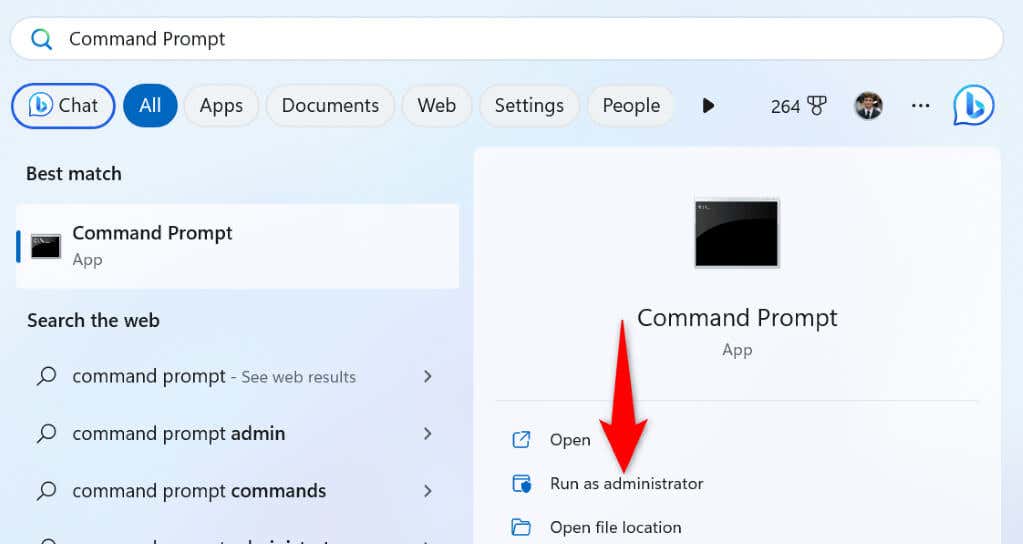Windows’ “Install Error – 0x80070103” keeps bugging you until an update is installed. Your updates fail to install for various reasons. It’s possible your PC has already installed the update you’re trying to install, or your computer may have another problem. Regardless of what’s causing the issue, you can follow a few troubleshooting tips to resolve your problem. We’ll show you what those solutions are.
Some reasons your update fails to install and shows the above error are that Windows Update has a minor glitch, the Windows Update service isn’t running properly, your Update cache is problematic, your system’s core files are corrupted, and more.
1. Pause and Resume the Problematic Windows 10/11 Update
When your update fails to install and displays an “Install Error – 0x80070103” error, a quick fix you can use is to retry, pause, and resume your update. Doing so forces the update to pause installing and then resume, which can fix your issue.
- Select Retry next to the update that’s failing to install on your PC.
- Choose the option to pause installing your update.
- Resume your update installation and let Windows finish the process.
2. Run Windows Update Troubleshooter
When you have issues with Windows’ updates, use your PC’s built-in Windows Update troubleshooter. This tool analyzes all your update problems and offers help to fix those issues. The tool runs on its own for the most part, which makes using it easier.
- Open your PC’s Settings app by pressing Windows + I.
- Select System in the left sidebar and Troubleshoot on the right pane.
- Choose Other troubleshooters on the following screen.
- Select Run next to Windows Update to launch your troubleshooter.
- Follow the on-screen instructions to find and fix your update issues.
3. Restart the Windows Update Service
Windows runs various services in the background to allow your system features to work. One of these is a Windows Update service that helps your PC find and install the available operating system updates.
It’s possible this service isn’t running correctly, causing your updates to fail to install. In this case, you can manually start (or restart) this service to possibly fix your issue.
- Open the Run dialog box by pressing Windows + R.
- Type the following in Run and press Enter:
services.msc
- Right-click the Windows Update service and choose Restart.
- Allow the service to restart.
- Head into Settings > Windows Update and try to install the available updates.
4. Fix Windows Update Issue by Deleting the Update Cache
One of the reasons your update fails to install and displays an “Install Error – 0x80070103” is that your Windows Update cache is corrupted. Your downloaded update file may be broken, causing Windows not to successfully install that update.
In this case, you can clear your current Update cache to fix your issue. Windows will re-download all the update files for you.
- Open Run by pressing Windows + R, type the following in the open box, and press Enter:
services.msc - Right-click Windows Update and select Stop. Keep this window open, as you’ll return to it shortly.
- Open Run again, enter the following in the box, and press Enter:
C:\Windows\SoftwareDistribution - Select all files in the open folder by pressing Ctrl + A.
- Right-click a selected file and choose Delete (a trash can icon).
- Get back to the Services window, right-click Windows Update, and choose Start.
- Go to Settings > Windows Update to download and install the available updates.
5. Fix the Broken Windows 11/10 Files
If your PC still doesn’t install your updates, Windows’ system files might have gone corrupt. Your PC experiences various problems when your core files are corrupted.
Luckily, you can fix all your corrupted system files using a built-in tool on your computer. You can use the SFC (System File Checker) tool to find and replace all corrupted files with working files.
- Open the Start menu, find Command Prompt, and select Run as administrator.
- Choose Yes in the User Account Control prompt.
- Type the following on the CMD window and press Enter. This command downloads the required files to fix your corrupted files.
DISM.exe /Online /Cleanup-image /Restorehealth
- Next, run the following command to begin fixing your system’s corrupted files:
sfc /scannow - Restart your PC when your broken files are fixed.
- Install the available updates from Settings > Windows Update.
6. Manually Download and Install Your Windows Update
If your specific update fails to install no matter what, you can manually download and install that particular update on your PC. This lets you bypass Windows Update and install the update directly on your machine.
- Launch a web browser on your PC and open the Microsoft Update Catalog site.
- Type your update’s name in the search box on the site and press Enter. You’ll find your update name on the Windows Update screen.
- Choose Download next to your update to download the update file.
- Run the downloaded file to begin installing your update.
- Restart your PC when you’ve installed the update.
7. Ignore Your “Install Error – 0x80070103” Message
If your update error message hasn’t gone away despite manually installing the update, you can ignore that error message. This is because Windows Update is trying to install an already installed update. In this case, it’s safe to ignore this message, and the message will go away when the issue is patched.
Various Ways to Resolve Your Windows Update Error 0x80070103
Your Windows PC displays the “Install Error – 0x80070103” error when an update fails to install. There are various reasons this happens, including a corrupted Update cache or your update being already installed on your system.
You can use the methods outlined above to fix your error and install your update without any issues. We hope this guide helps you out.













